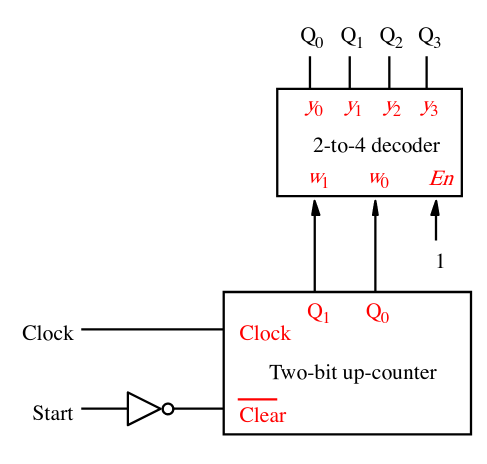Counters
Contents
Counters
Counters operate by taking the output of a flip-flop as its clock input
| Circuit | Table |
|---|---|
 | 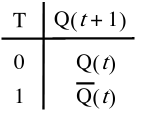 |
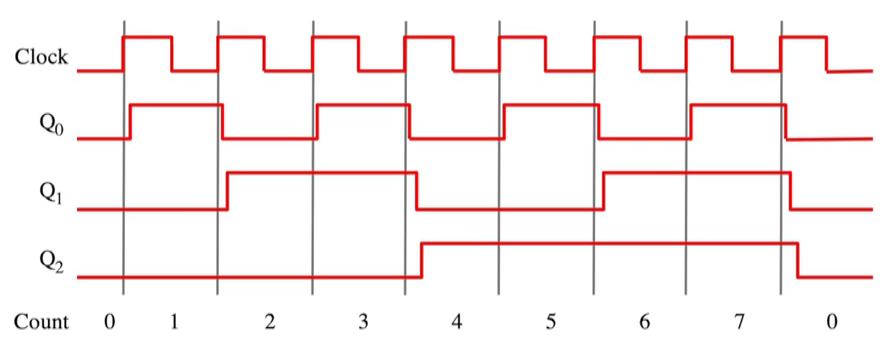
Note: As a result of propagation delay, there is some time rippling that occurs. This causes some glitching (between count 3 and 4 there are four different values).
Solution
- Use the same clock signal for all circuits
- Only trigger the flip-flop when pre-requisites are met (i.e. 0b011 become 0b100)
- i.e. AND gate the input with previous conditions

Note: Clock time >= Critical Path
Critical Path: Propagation delay ($t_{cQ}$) + delay(AND gates) + $t_{su}$
Asynchronous Enable and Clear

Synchronous Enable
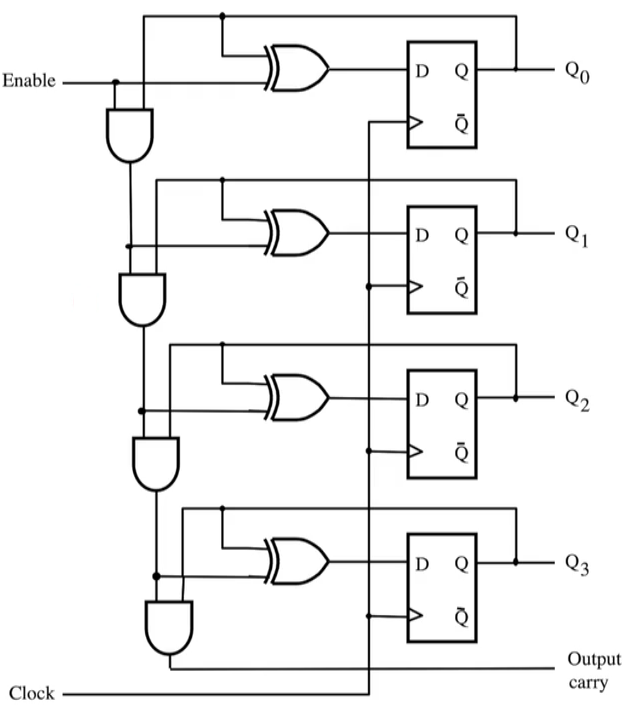
Behaviourial Code
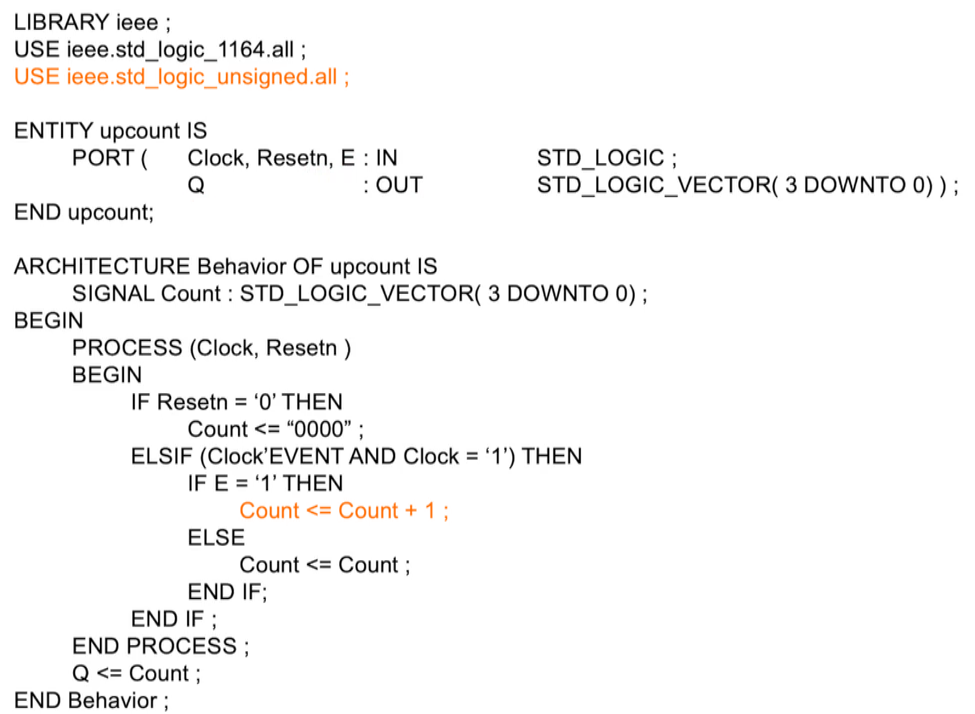
Starting the counter from any value
Parallel loading with an input signal, and load flag
| Circuit | Similar Code |
|---|---|
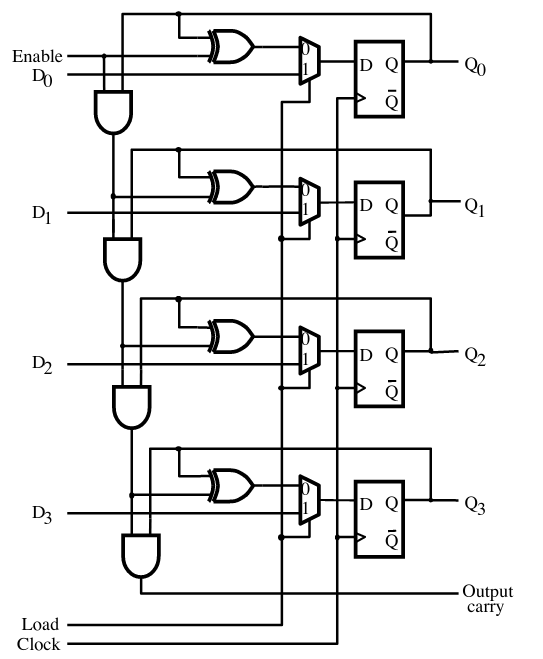 | 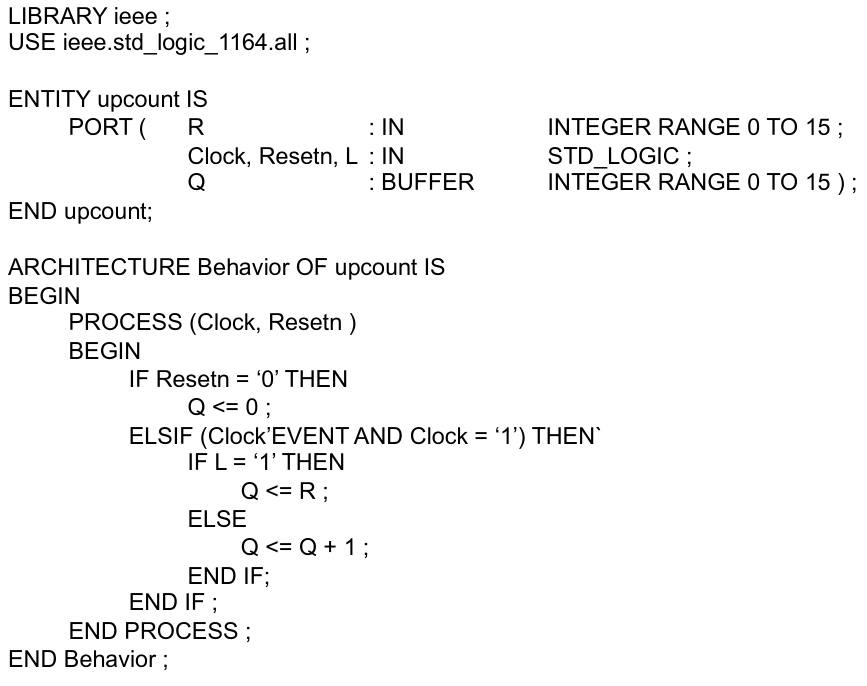 |
Note: Code doesn't include the load flag
Modulo Counter
For counters that do not use the max range of values ($2^n$) of an $n$-bit signal, we can use a loading circuit that gets triggered on a certain state
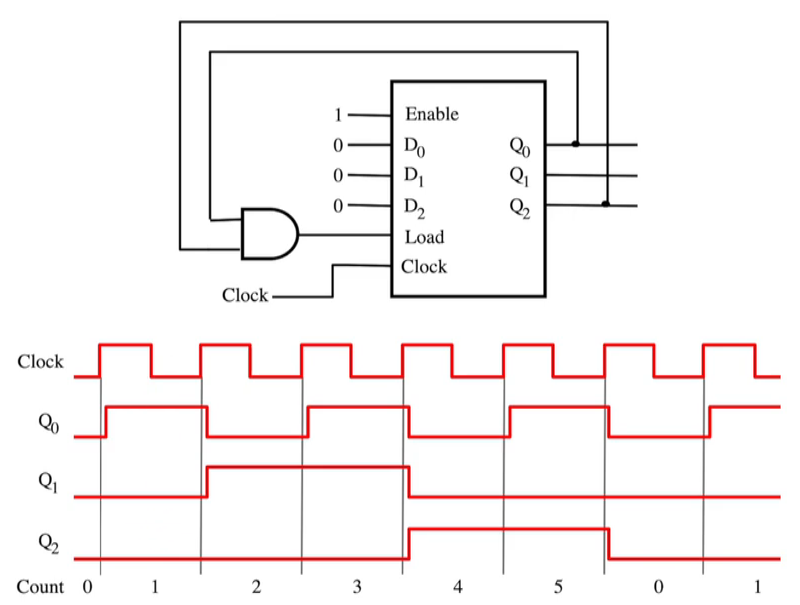
i.e Modulo 6 Counter
When Q = 5, perform a load of 0 during the next cycle.
Two Digit Counter
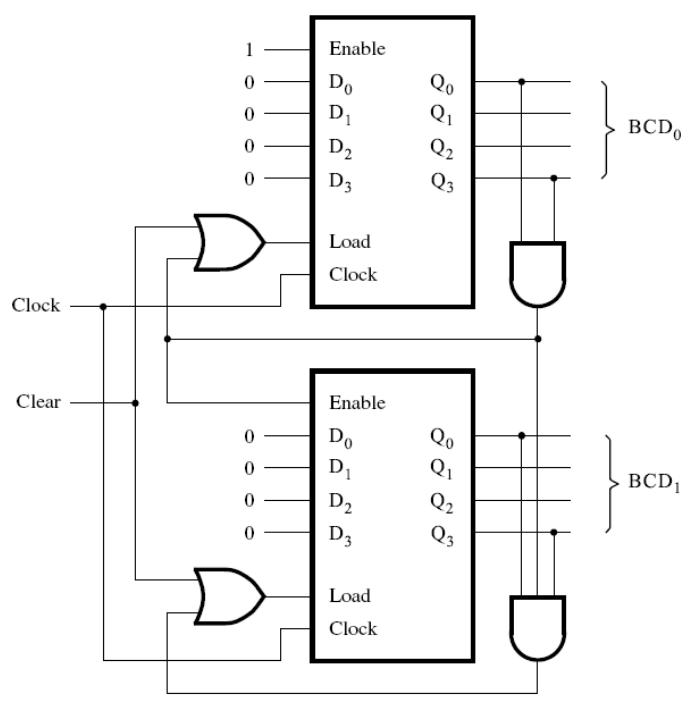
Ring Counter
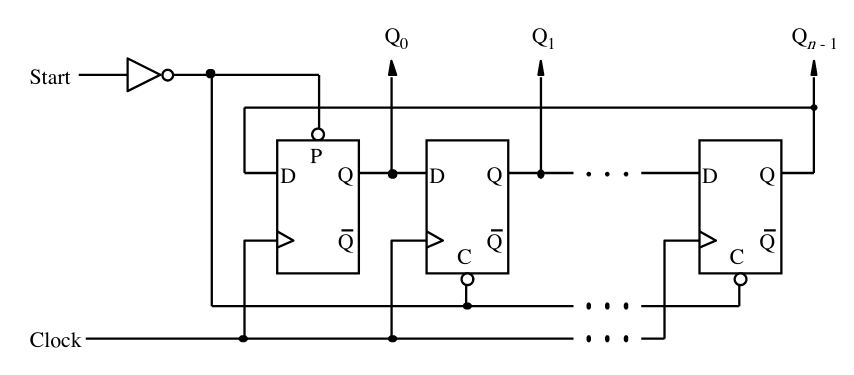
Alternative